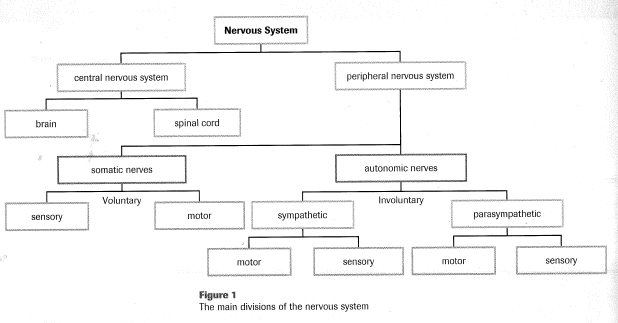|
The nervous system contributes to homeostasis through its response to internal and external stimuli.
|
The endocrine glands help to maintain homeostasis through the hormones they release into the blood.
|
|
|
|
By working together, the nervous and endocrine systems help us react to changes in the internal and external environment, and maintain homeostasis.
Read through the following notes. You should be able to:
Read page 408 of your textbook to get started.
- define 'homeostasis' and 'negative feedback'
- state at least three differences between the 'nervous system' and the 'endocrine system'
- describe the following activities of the nervous system: Reception, Interpretation, Sorting and Transmission
- identify the parts of the nervous system
- answer the quick review questions at the end of the notes
Read page 408 of your textbook to get started.
| nervous_system_l1_power_point.pptx | |
| File Size: | 618 kb |
| File Type: | pptx |
Know the following breakdown of the nervous system. By the end of this unit, you should be able to describe each one.
Go to the site below to review with flash cards.
http://www.cram.com/flashcards/day-1-full-biology-30-review-360339

